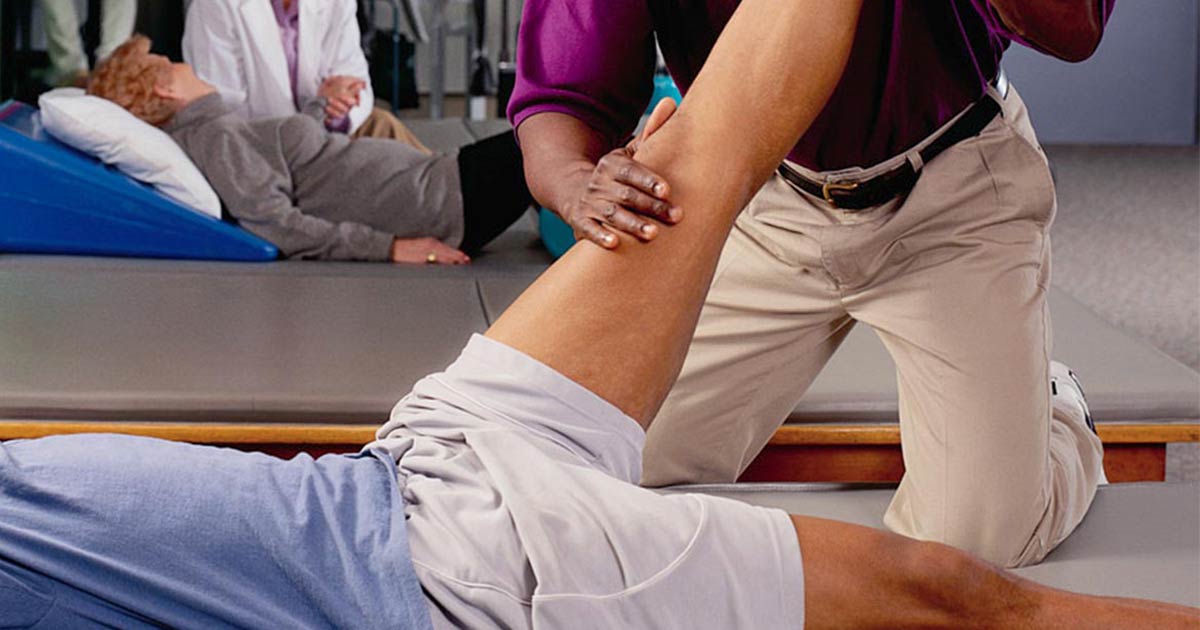10 Exercises to Improve Outcomes After Knee Replacement
- Category: Health & Wellness, Bone and Joint Health
- Posted On:
- Written By: LVMC

As an orthopedic surgeon, I understand that total joint replacement patients are eager to get up and start using their new knee as soon as possible. During your treatment for this major surgery, we’ll talk about how you should recover, what your range of motion will be, and how you can prevent complications while building your strength after surgery.
In most cases, returning to your level of activity that you had prior to the degeneration of your knee joint is within reach. You need to rebuild the muscle strength in your leg, which may have been weakened while you suffered from knee problems.
I have addressed the injury or damage to your knee surgically. Now, it’s up to you to put in some hard work to maximize your improvement. In order to continue healing and improving, you must follow the instructions developed by your physical therapist with your specific needs in mind.
As a surgeon, I recommend you exercise your knee joint at least two or three times daily after surgery. Remember, walking with purpose is a simple way to begin your exercise routine. After surgery, you should walk with purpose several times a day. Just getting out of the house to get the mail, or walking from your bedroom to the bathroom, isn’t enough. Don’t overdo it, but plan a 10 route around the interior of your home and walk it for 10 minutes, three times each day. As you build strength, plan on taking a longer walk in your neighborhood for 20 minutes at least twice a day.
Some exercises can begin as early as the recovery room at the hospital. You’ll want to make sure you have healthy circulation, to prevent blood clots. Starting exercise as early as you can will help you in your recovery and should lessen post-operative pain.
In your hospital bed, you can do straight leg raises, for instance. Tighten your thigh muscles as you keep your knee straight. Lift your leg several inches off the mattress and hold for five seconds, then lower your leg to the bed. Keep repeating until your thigh feels fatigued. You can also do this exercise sitting on the side of your bed, by straightening your unsupported leg.
Ankle pumps are a great way to work on strength as well. While lying face up on the bed, or sitting on the edge, pull your feet toward your head while keeping your knee straight. Then push your foot slowly away, pointing your toe.
Another way to continue healing is to do what’s called “floor polishing.” Sit on a sturdy, non-rolling chair. Bend your knee back and forth as much as possible for 30 seconds at a time. Then hold your foot in the back position for 30 seconds.
Each exercise should be repeated 10 times if you feel up to it. As you continue to heal and feel stronger, you may increase the number of times you do each exercise. By two weeks post-surgery, you can try 15 repetitions. By three weeks, you may be able to accomplish 20 repetitions. Just remember, if you begin to feel pain, stop the exercise.
Here are a few more exercises to try, as you are able:
Lower Extremity Strengthening Exercises
- Short Arc Quad Contractions
Sit on a firm, flat surface with your hands behind you for support. Place a rolled towel on your knee to bend it about six inches. Raise your foot until your knee is straight. - Long Arc Quad Contractions
With the leg dangling off the edge of mat or chair, place a towel roll the under the knee and straighten knee completely. Hold for a count of five, relax for a count of five. Do not add weights to this exercise. - Glute Sets
Pinch your buttocks together as tight as possible. Hold for a count of 5. Relax for a count of five. - Ankle and Foot Heel Cord Stretch, Standing
Face a wall, standing about two paces away, and place your hands on it. Step forward with one foot. With both heels on the ground, lean your hips toward the wall while keeping the leg in back straight to stretch the calf muscle. Hold for 10 seconds, then relax. Repeat the exercise, but this time keep the back leg slightly bent at the knee. Hold for 10 seconds, relax. - Knee and Hip Flexion
Lie on your back with your legs straight and relaxed. Keep your kneecaps pointed toward the ceiling throughout the exercise. Slide one foot toward your buttocks, bending your knee and hip. Slowly return to the starting position. - Hamstring Isometric Contractions
Bend the knee slightly. Tighten the muscles on the back of the thigh while digging down and back with the heel. (As if you are trying to bend the further but don't move.) Hold for a count of five, relax for a count of five. - Straight Leg Raises
Tighten the muscles on the top of the thigh, trying to straighten the leg as much as possible. Keep the toes pointed up. Hold to a count of five. Relax to a count of five. - Prone Hamstring Curls
Lie on your stomach with your arms folded under your head, or stand up straight near something that can be used for support. Bend your knee, slowly bringing your heel up towards your buttocks. Slowly return to the starting position and relax. - Standing Heel Raise
Stand on your toes, lifting your heels as high as you can. Slowly return to the starting position (heels on the floor). - Hip Adduction, Standing
Stand up straight near something that can be used as support. Keeping the knee straight, slowly swing the involved leg out to the side as far as possible. Slowly return to the starting position.






